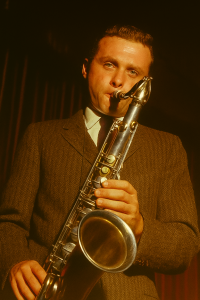Big Chief
Professor Longhair
December 19, 1918 – January 30, 1980
Click here to Support Jazz on the Tube
Henry Roeland Byrd was born on December 19, 1918, in Bogalusa, LA, and moved with his family to New Orleans at a young age. As a child Henry would tap dance for tourists on the street in the French Quarter and had a great sense of rhythm from the get-go. Longhair tells us, “The very first instrument I played was the bottom of my feet, workin’ out rhythms, tap dancing. We used to dance up and down Bourbon Street.” Fess learned piano as a child from his mother on an old broken piano left out for garbage and developed a unique style due to reasons no one could plan if they tried. “My mother started teaching me what few keys they had left on it – I guess that’s why I learned the style that I learned. When I was playing, I had to remember what keys were good and what was bad and skip them and jump ‘em. Some of the guys said I was cross-chording but, whatever it was, I was getting to the right keys. With these good pianos, it’s simple for me to do what I was doing then.”
After serving in the army Longhair returned to New Orleans in 1948 and began playing at the Caldonia Club and received his stage name, Professor Longhair, due to his shaggy hairstyle. Fess first recorded in 1949 and among the four tracks recorded was one of his signature songs ‘Mardi Gras in New Orleans’. Through the 1950s Longhair recorded for several record companies and among his records was his one and only hit on the R&B charts, ‘Bald Head’. Also during this time, he recorded songs popular to his fans such as “Tipitina,” “Big Chief,” and “Go to the Mardi Gras.” The 1960s were extremely difficult for Longhair for several reasons including the fact that the record companies he was dealing with simply were not giving him a fair share of his profits. Even for an artist as talented as he, Fess has periods of musical unemployment which is hard to imagine. In 1970 the New Orleans Jazz and Heritage Festival began and the people who founded it searched for Longhair to be an act. It took them a year to find him, working at a record store sweeping the floor and making deliveries at the age of fifty-two.
Fess performed at the second Jazz Festival in New Orleans in 1971 and it is said that he was a literal show-stopper. The entire festival audience, food vendors, and even musicians performing on other stages stopped what they were doing to come listen to Professor Longhair. In addition to returning to the New Orleans Festival yearly, Longhair played at the Newport Jazz Festival and Montreux Jazz Festival in 1973. In 1977 a club opened up in New Orleans name Tipitina after one of Fess’ tunes and gave him a place to play year-round as well as a partnership in the club. In ’78 Longhair toured Europe and followed that by touring the U.S. in ’79 and a record deal with Alligator Records. Longhair recorded his first album at the age of 62 called Crawfish Fiesta and it was released on January 31st, 1980. Professor Longhair passed away on January 30th, the day before it was released.
*In 1981 Fess was inducted into the Blues Hall of Fame and in 1992 the Rock and Roll Hall of Fame. In 1987 he was awarded a Grammy for his early recordings on Atlantic Records.


